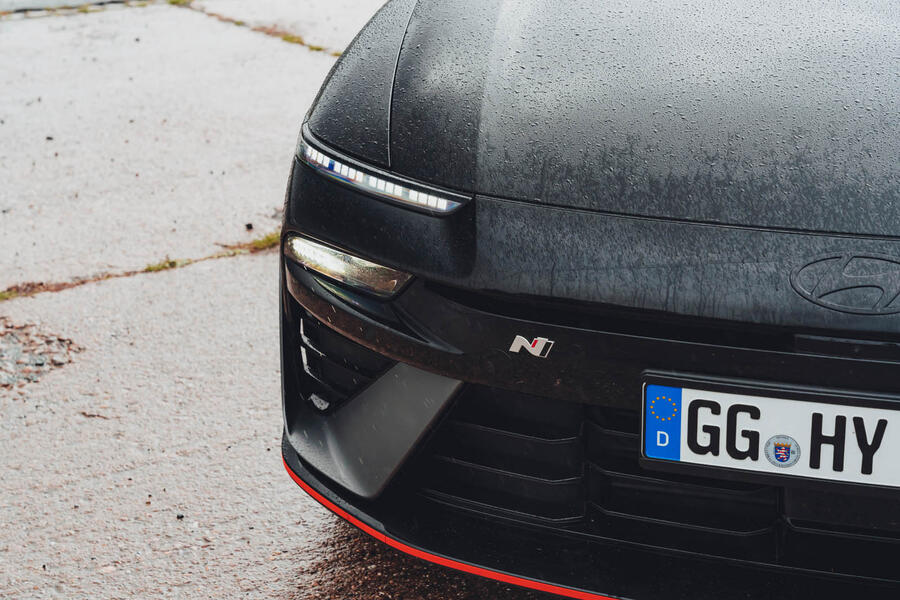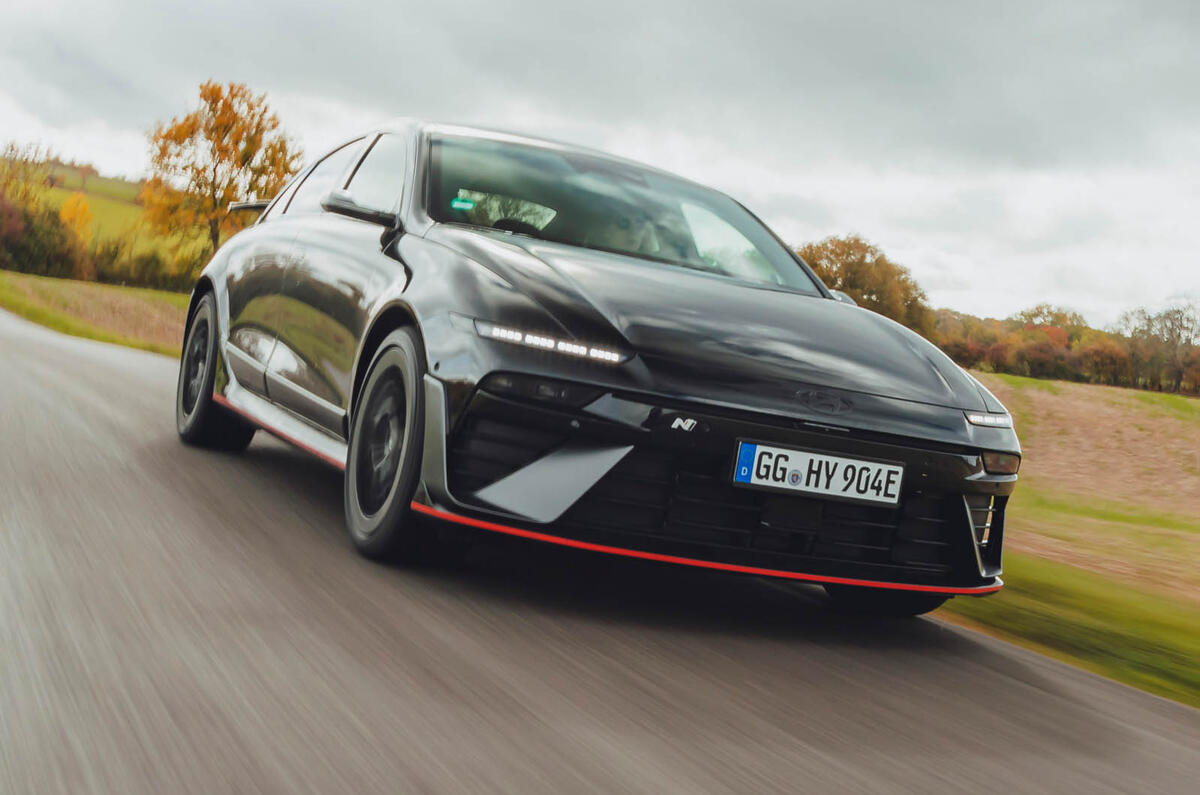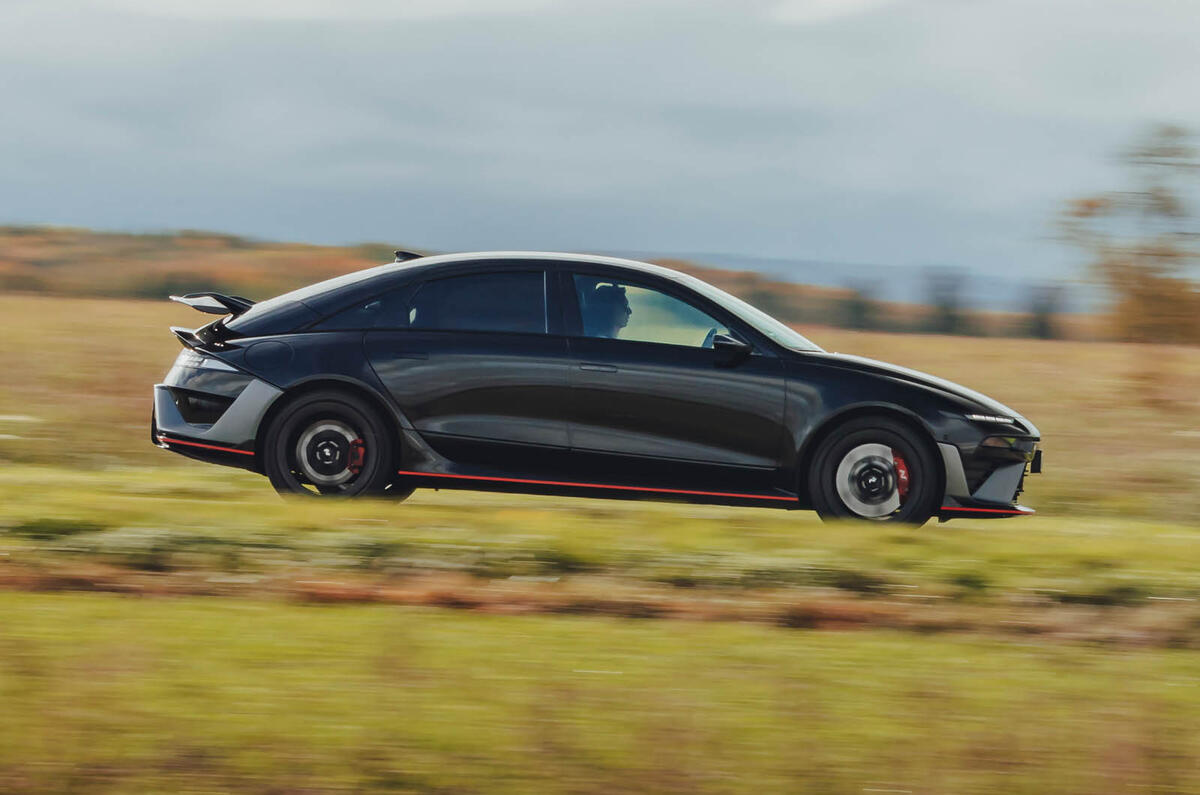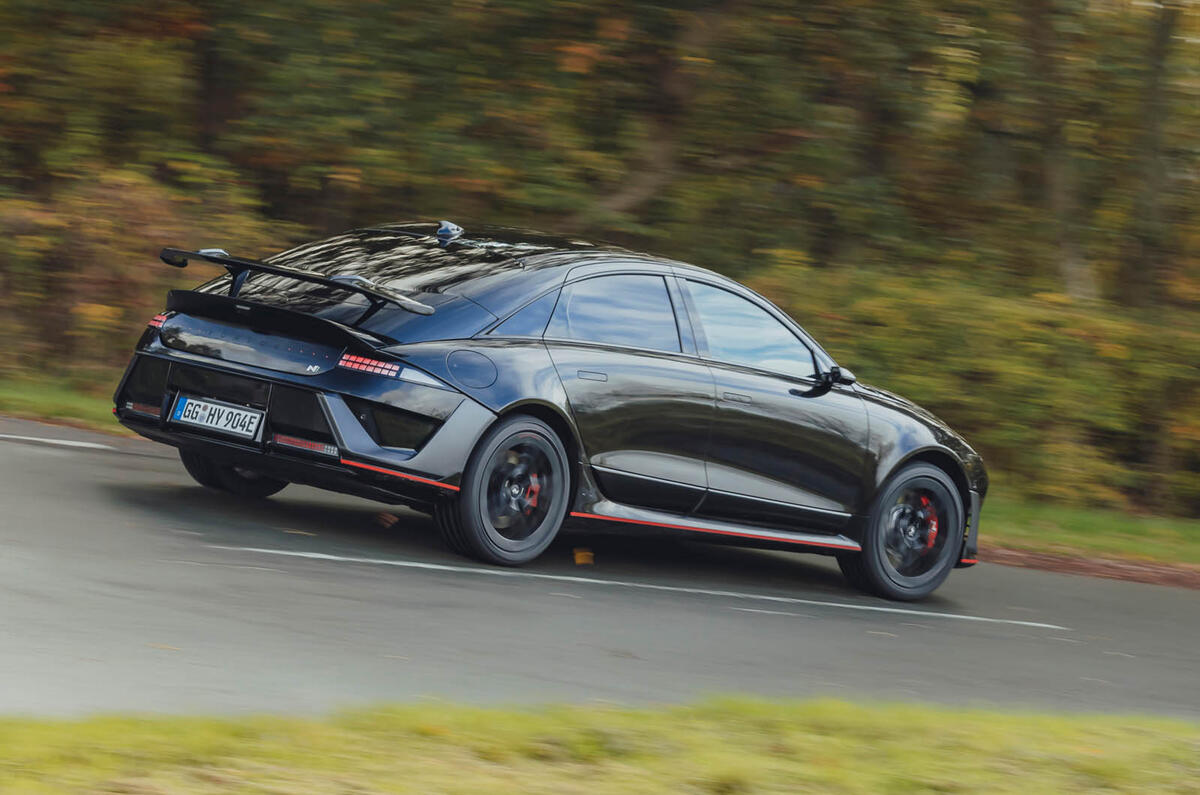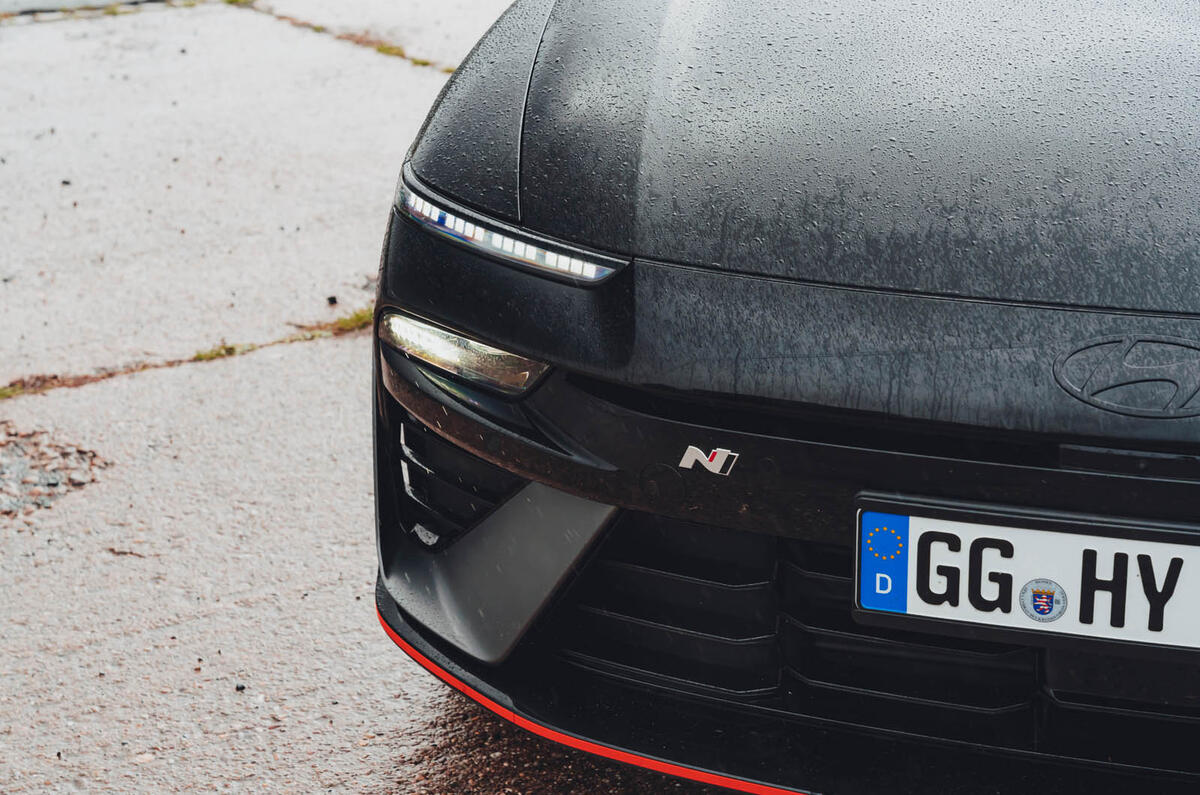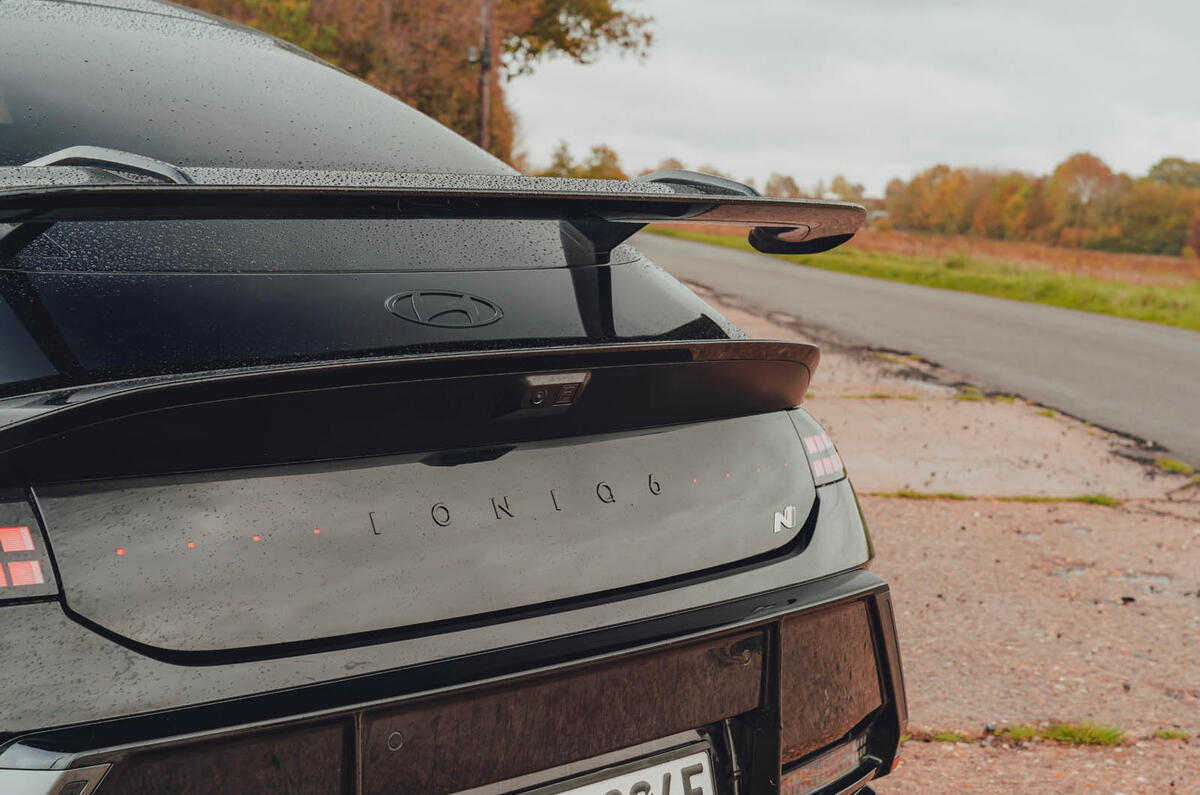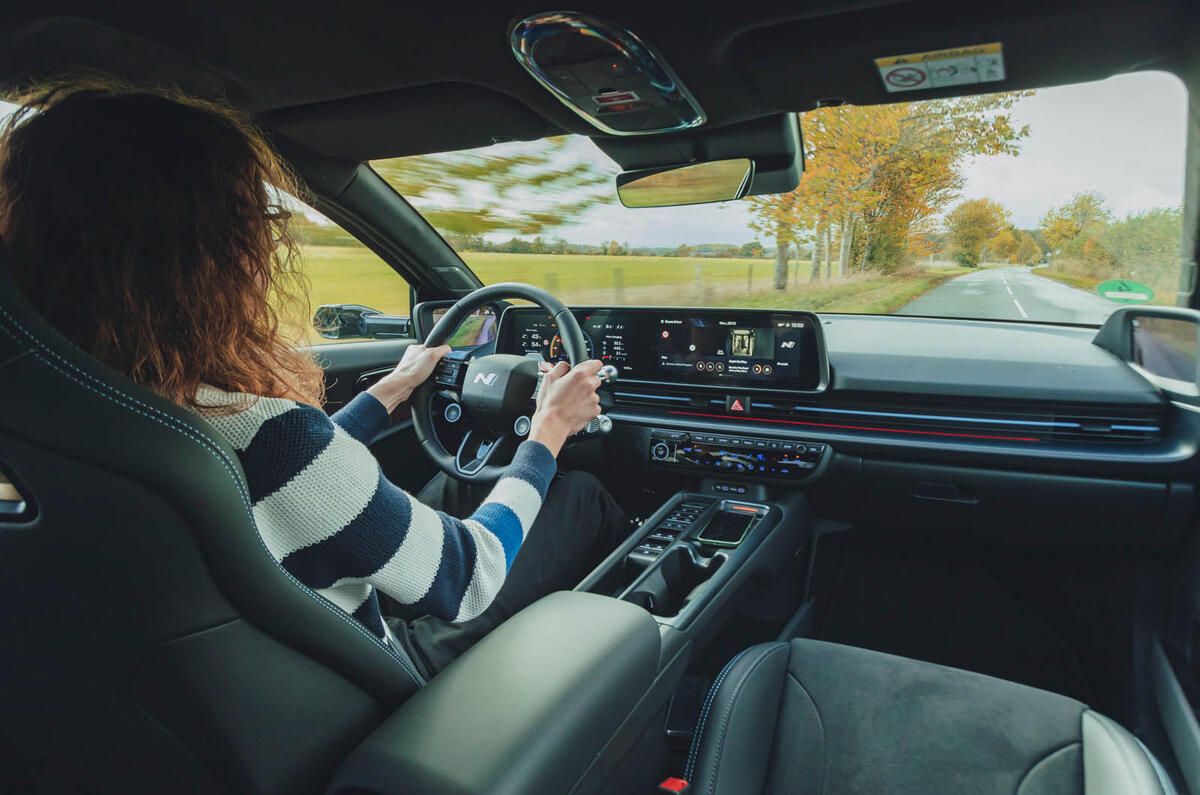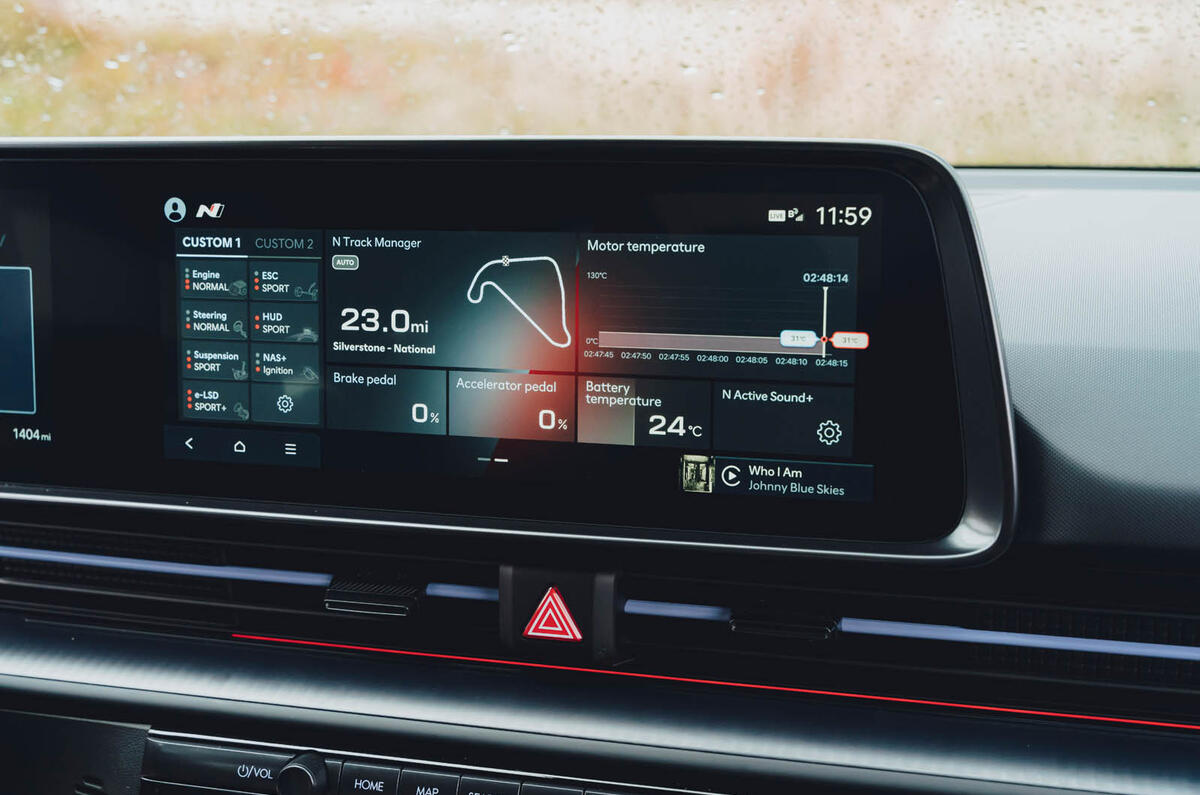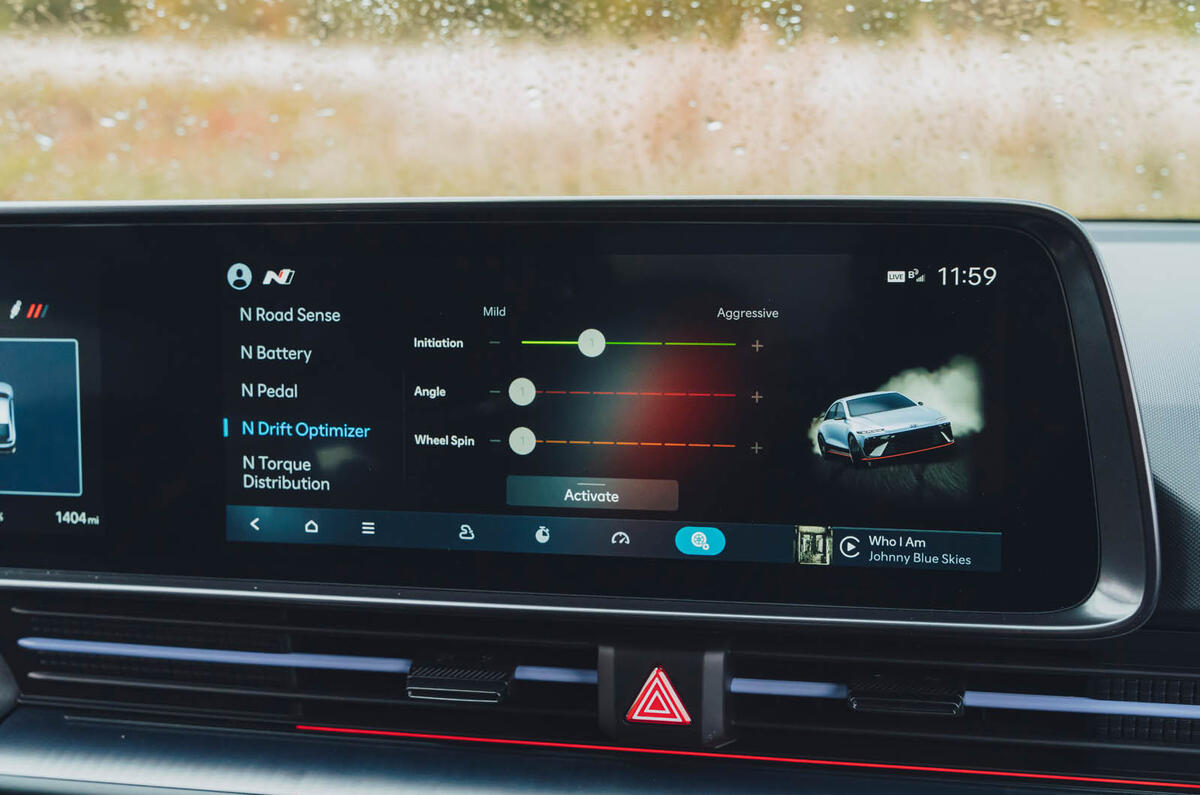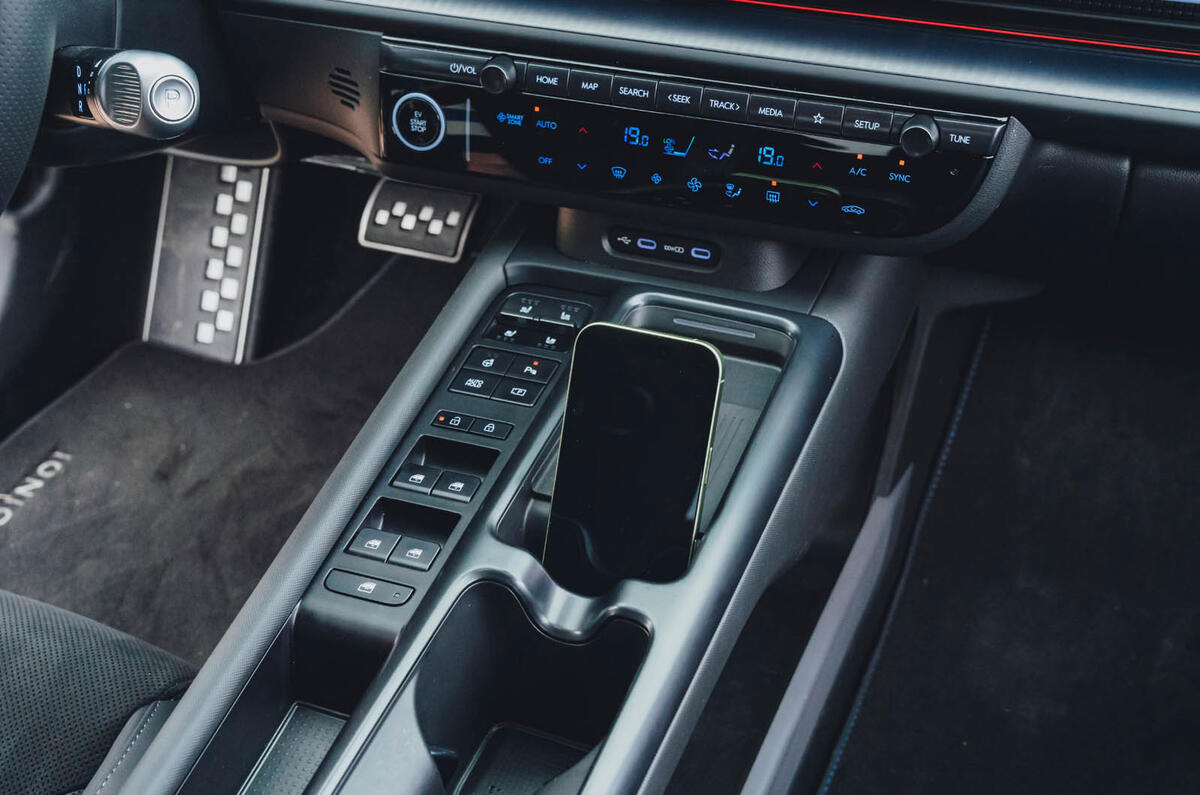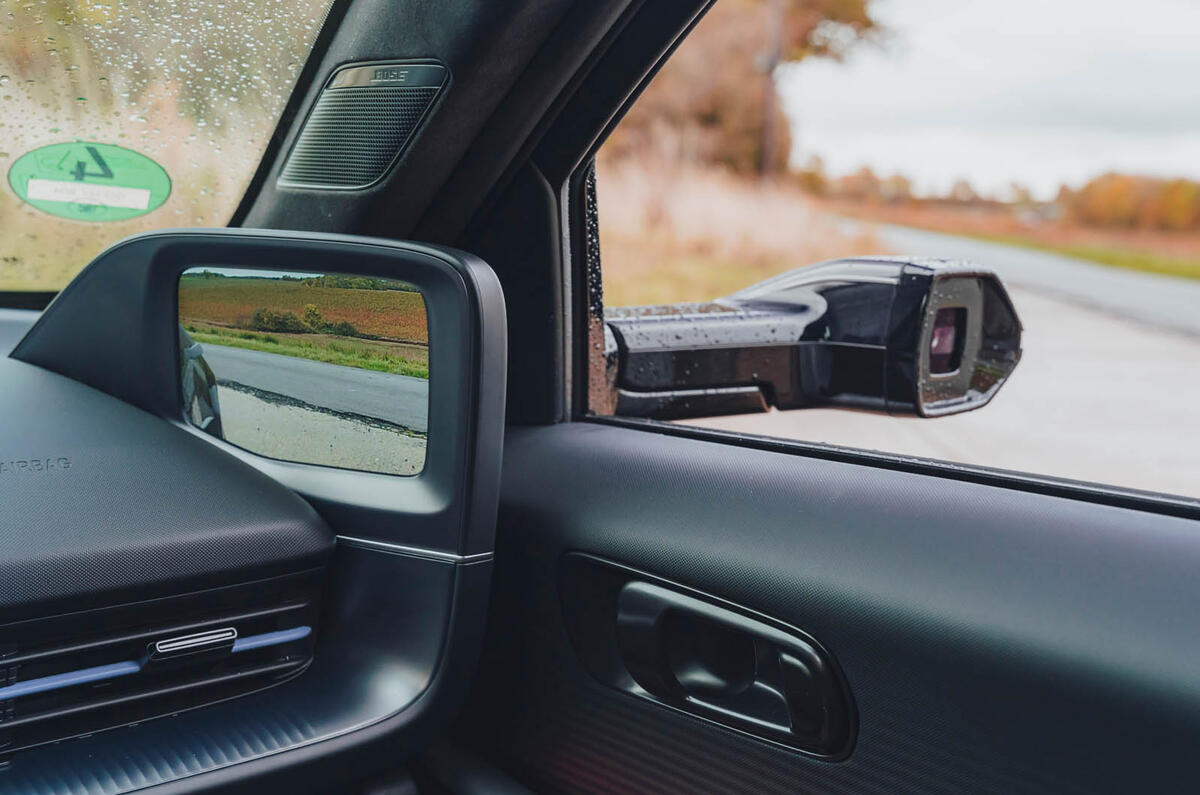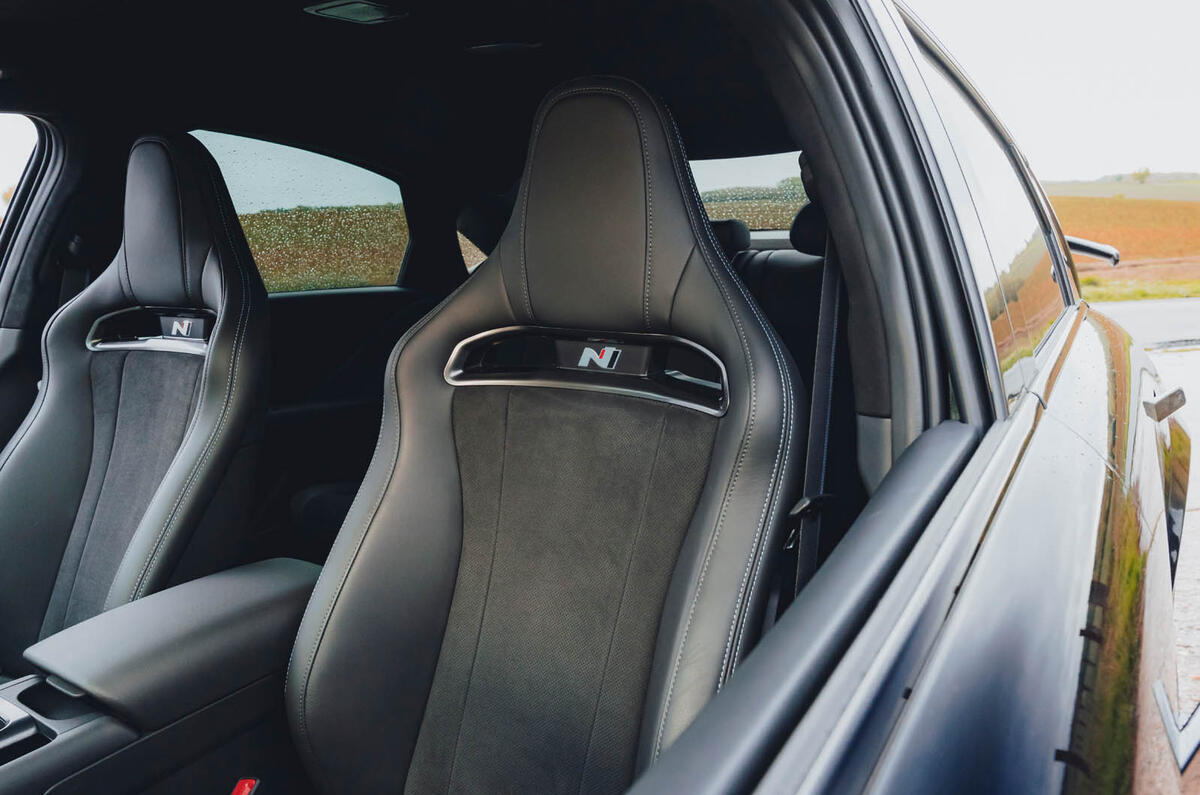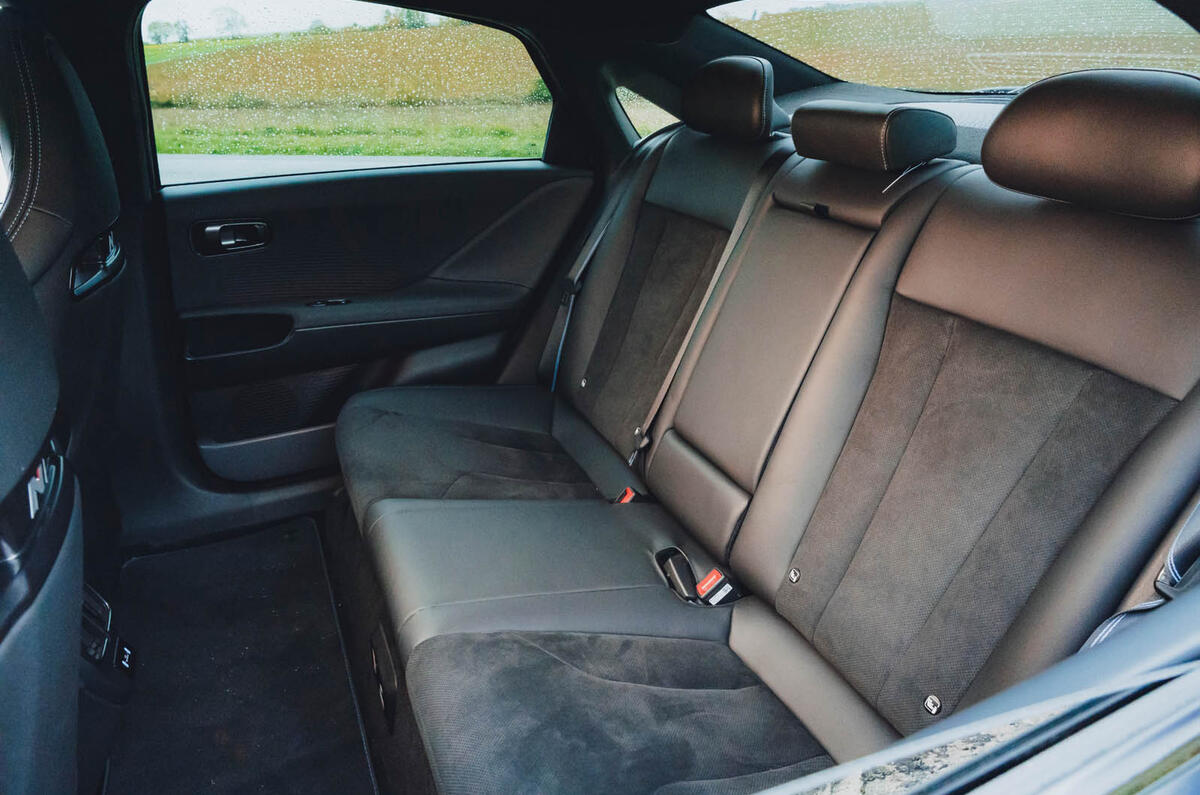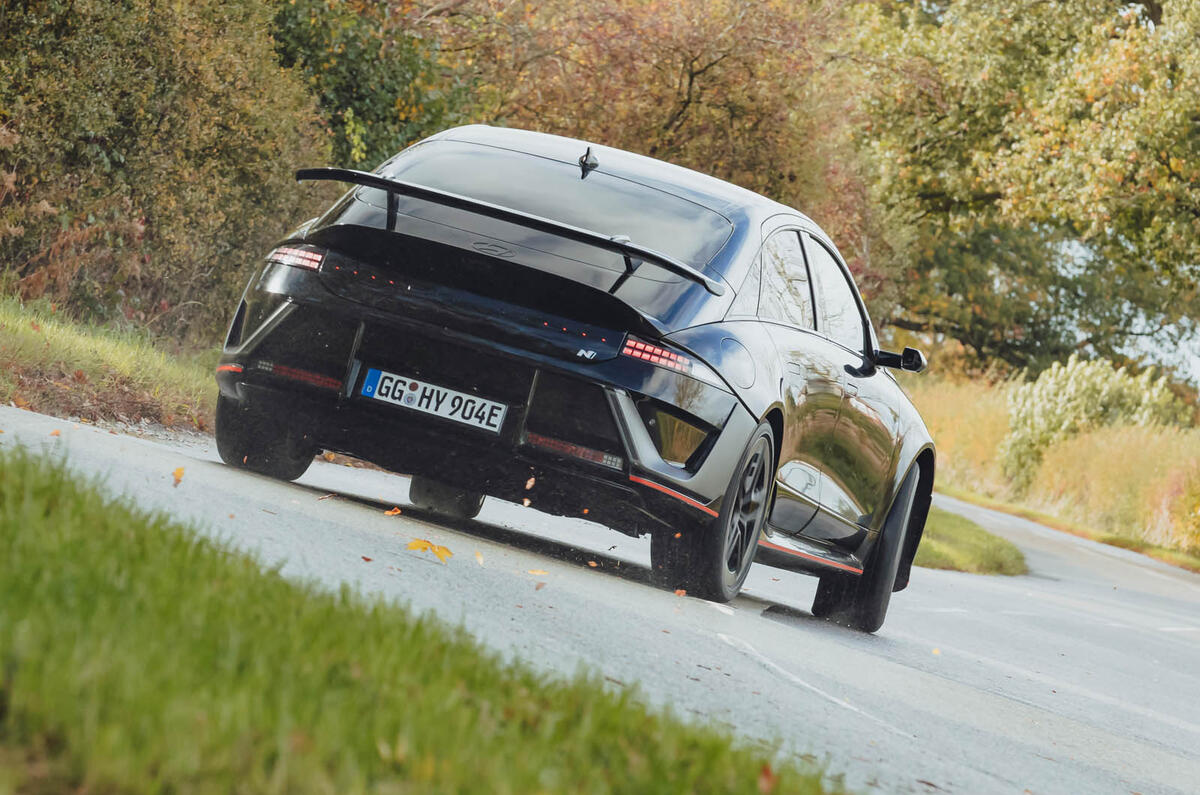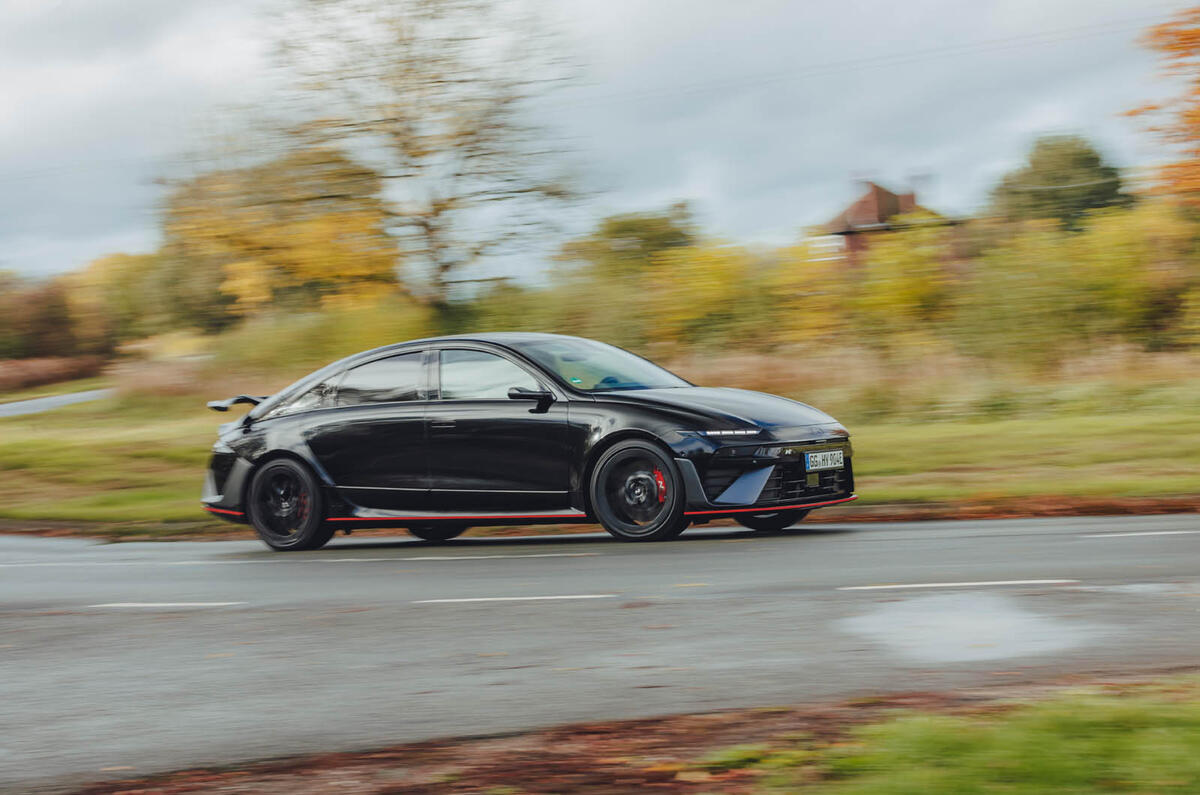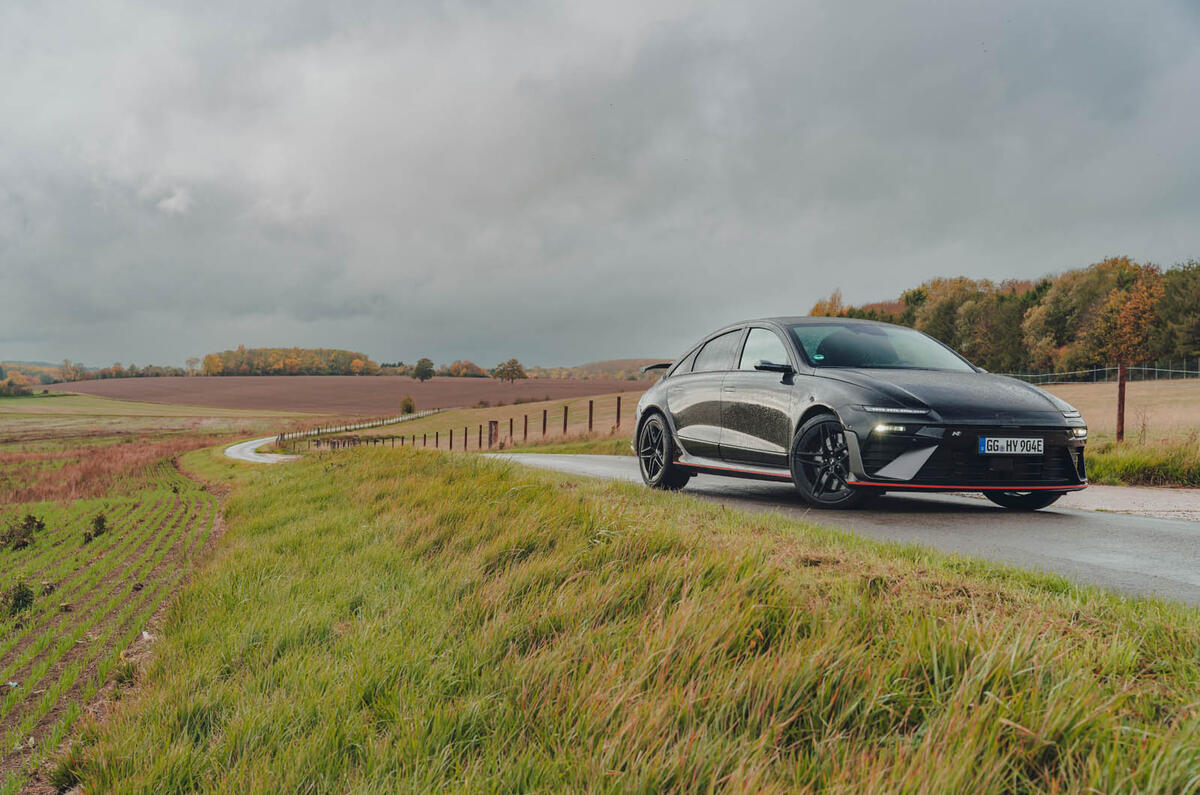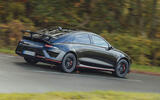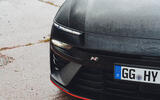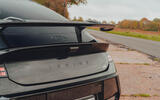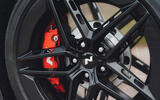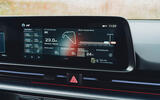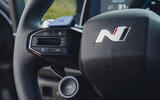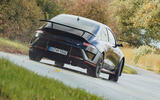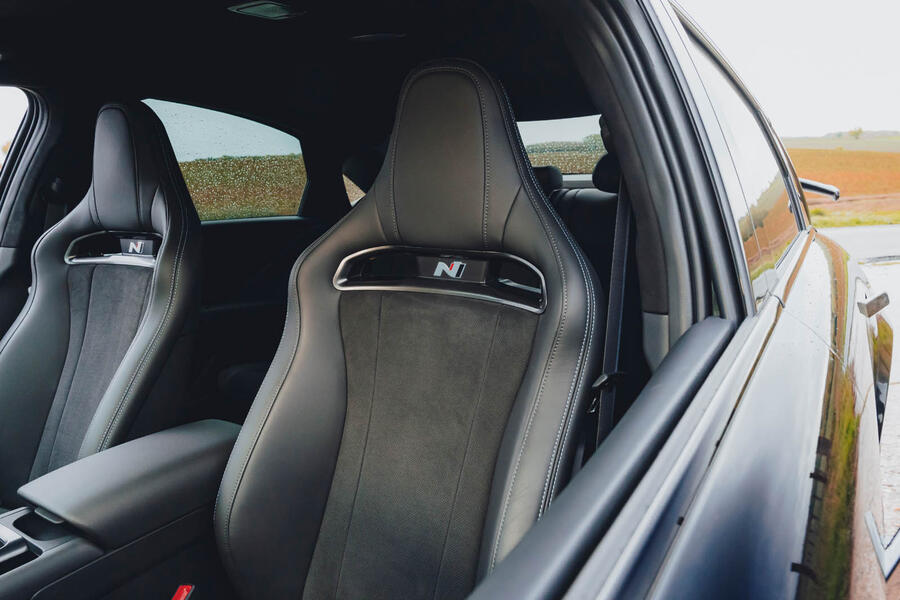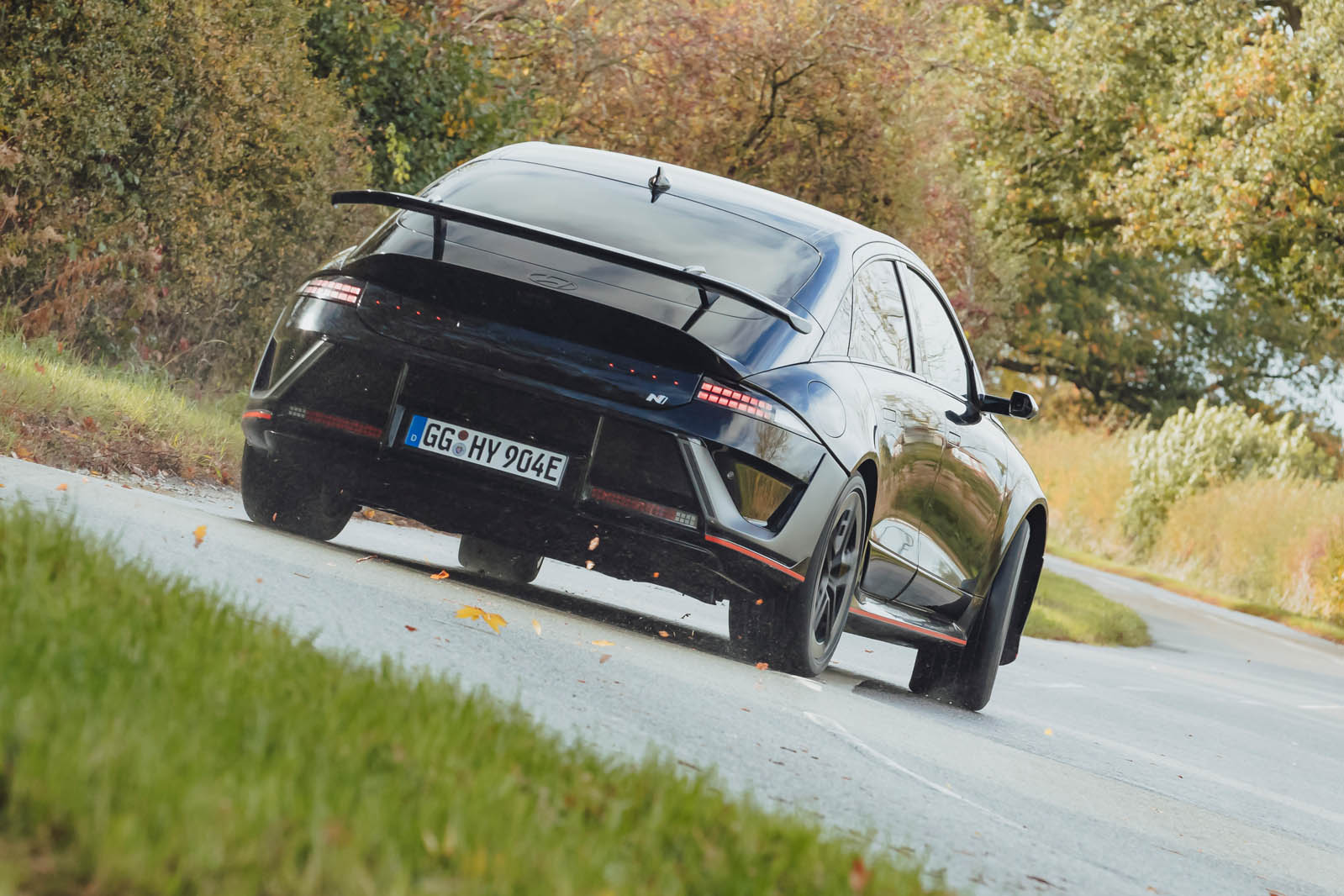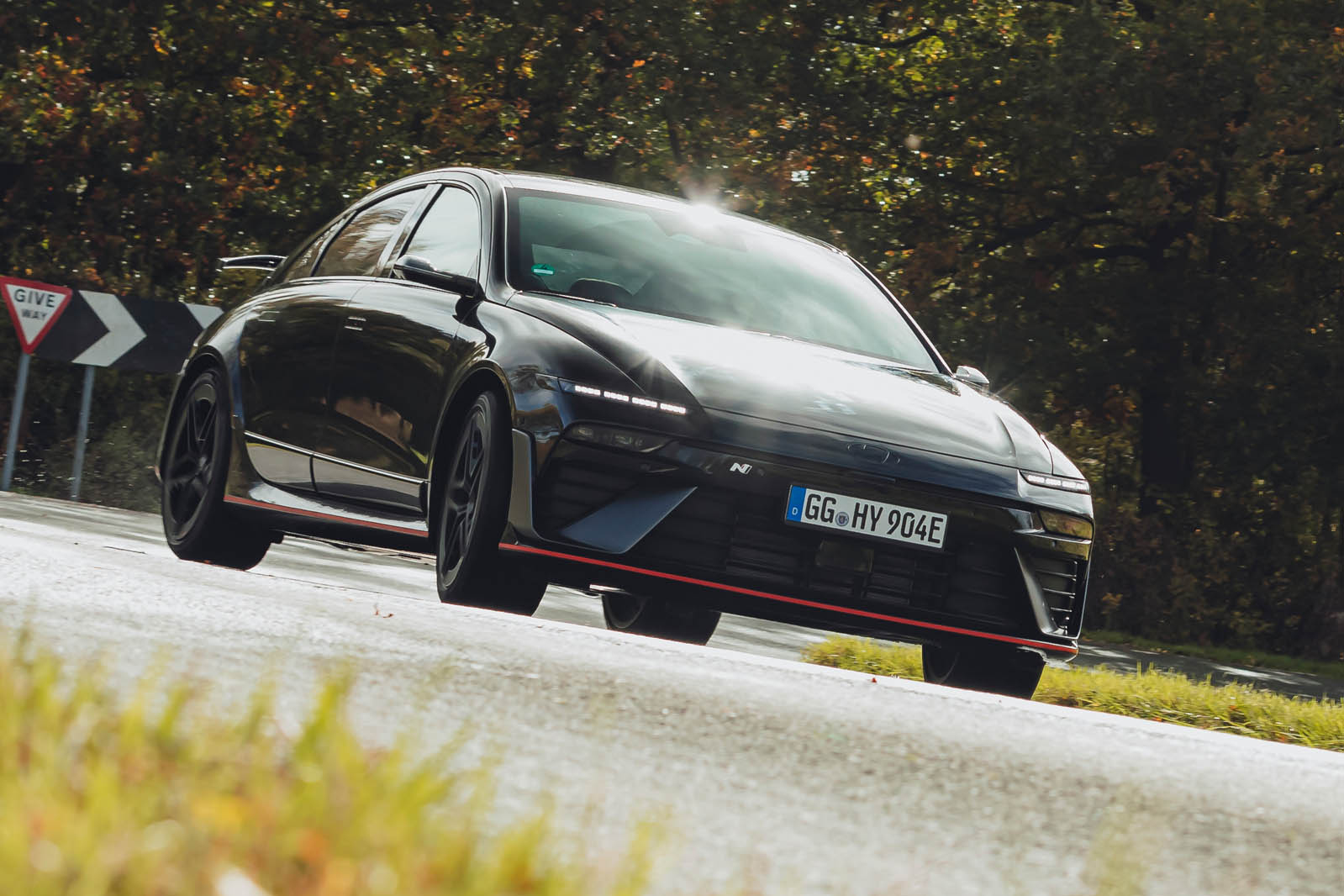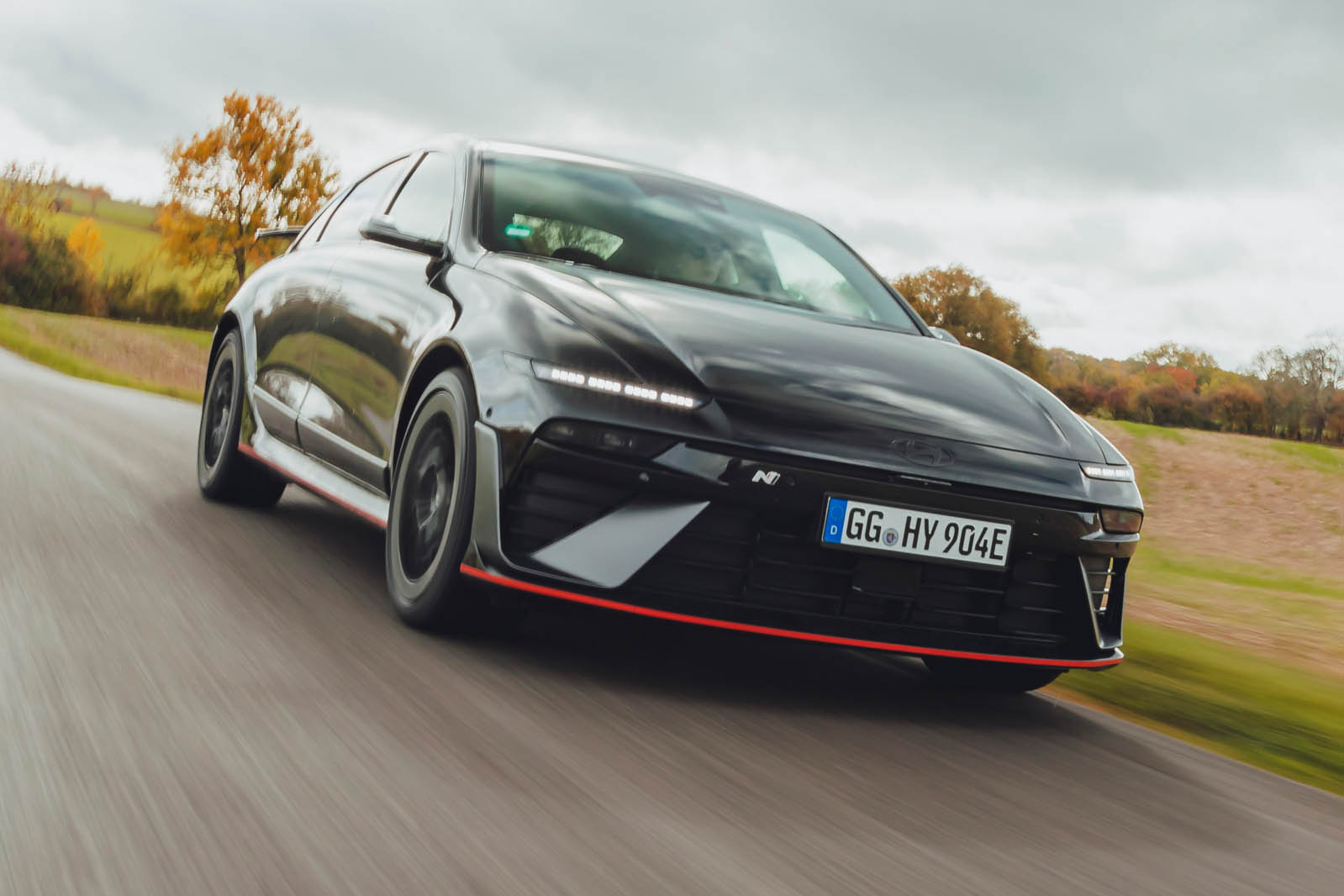Hyundai’s sporty car department is clearly very eager to N all the things, because the Ioniq 6 N is based on the facelifted version of the regular Ioniq 6, which we haven’t even driven yet. There’s a lot to cover then, so let’s start with the mechanicals.
By and large, they are familiar from the 5 N. We’re familiar with the 800V E-GMP platform with an 84kWh battery, and dual motors with 156bhp at the front and 378bhp and an electronically controlled LSD at the back. Hyundai probably could have given it some more power for the optics, but has shown admirable restraint.
The mechanical changes are actually quite subtle. The dampers are still adaptive, but from a different supplier, and various bushings have been reformulated to isolate more of the vibrations. In addition, there are various upgrades to the geometry, steering precision and the stiffness of the axles and structure. Most of this is unseen, but when you look in the boot, you’ll immediately spot the bright orange chassis brace across the rear seat backs. Clearly this is a car that’s been developed more for a trip to Bedford Autodrome than Ikea.
The 6 N gets plenty of visual cues to tell you this is the fast one too. Whereas the 5 N is relatively subtle and could be confused for a standard Ioniq 5 in N Line trim, the 6 N gets the full super-saloon treatment. If you managed to miss the wider arches and deeper splitter, you’ll surely notice the swan-neck rear wing. In combination with the duck-tail spoiler underneath, the 6 N gives off Escort Cosworth vibes. Its 20in wheels complete the package and wear new 6 N-specific Pirelli P Zero tyres.
As well as the N-specific stuff, the 6 N benefits from the same facelift upgrades as the standard Ioniq 6. That means the slightly blobby headlights have been replaced with slittier ones. I always liked the Ioniq 6’s quirky style, but this 6 N certainly looks a lot more purposeful than the standard version of the original.
